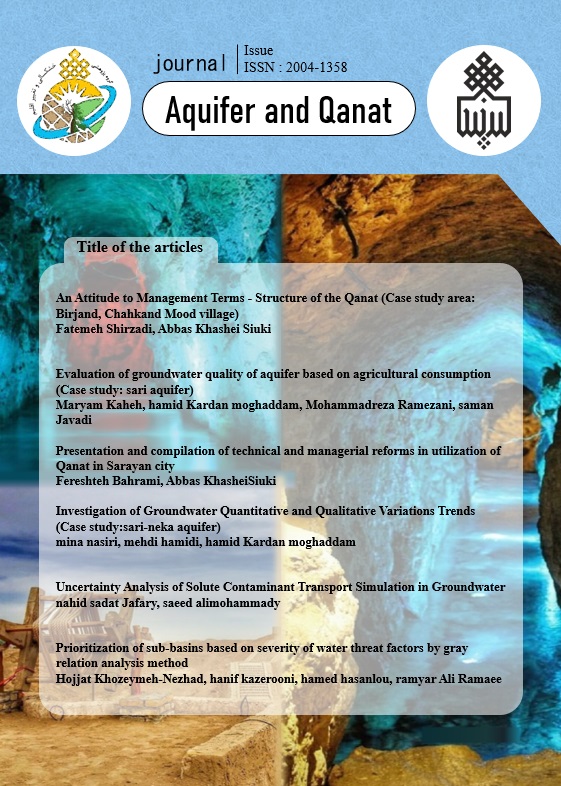Document Type : Original Article
Authors
Department of Water Science and Engineering, Faculty of Agriculture, University of Birjand, Birjand, Iran
Abstract
Qanat is one of the thousands of ancient relics that have been devised by Iranian scientists and engineers and is considered an important indigenous knowledge. The oblivion of Qanat terms and its local dialects in each region is one of the most important and valuable topics. One of the methods of utilizing water from wells is qanat, which eliminates a significant percentage of the water's need in the area, but this legacy is now being forgotten. Also, the oblivion of the terms and words used in this area is significant and high. In this research, an attitude about the local structure and terminology of the village of Chahkand Mood in southern Khorasan province has been studied. It has also been tried to collect and submit Qannat information and terminology related to the same area with interviews from well-known experts and experts. Words such as fenjan, tas, sahm, nimran, taghe, chah tombideh, deilam, dahan, etc. are used in the village in the field. The results of this paper showed that the spread of customs and culture in Iran has led to the creation of a dictionary and dictionary of terms and dialects. These terms differ according to the cultural difference that exists in each city and village.
Keywords

